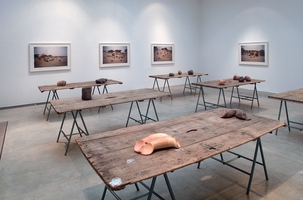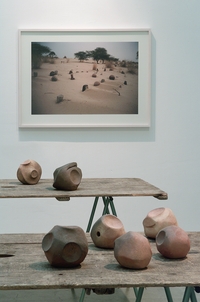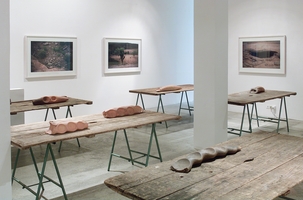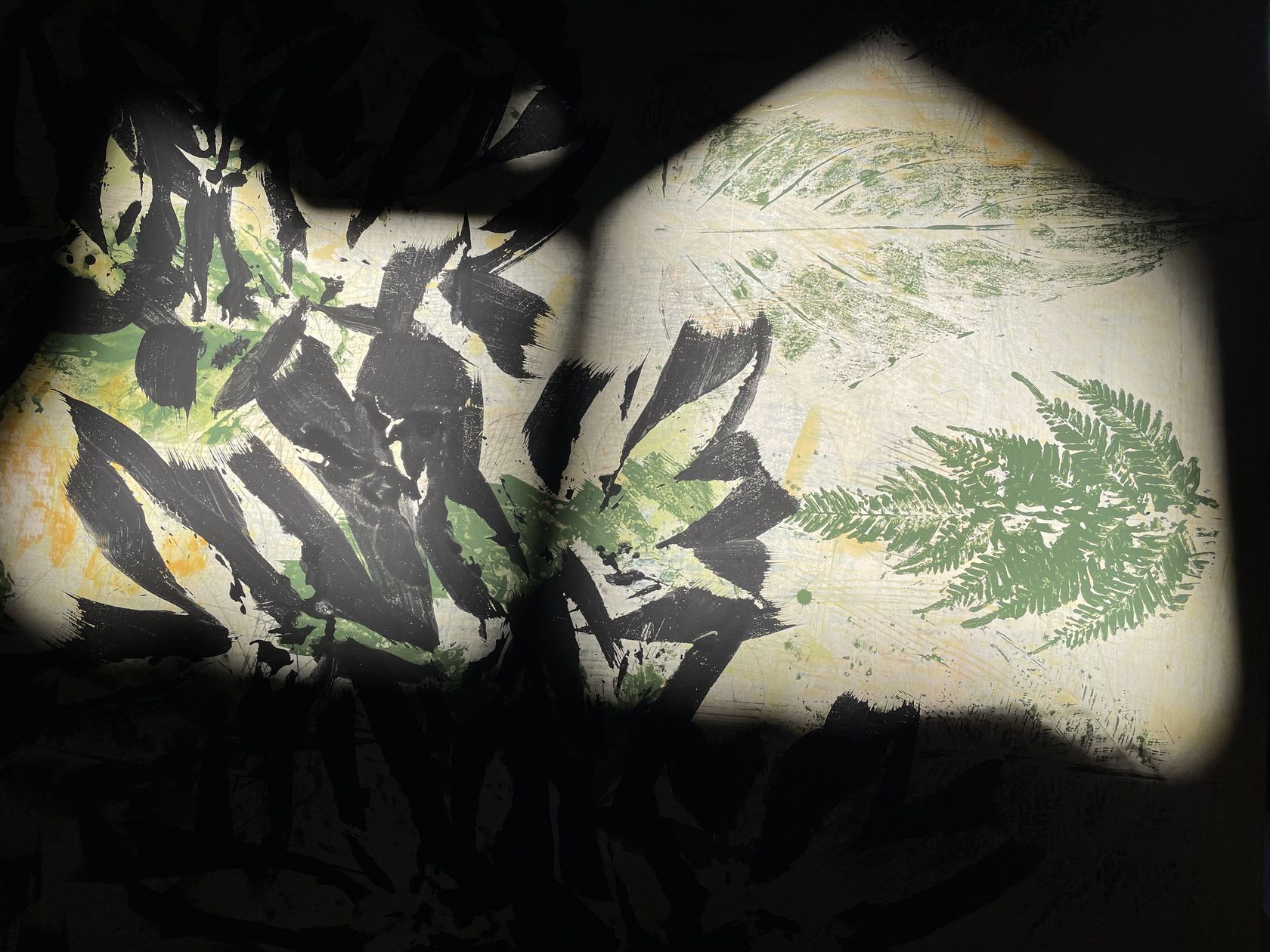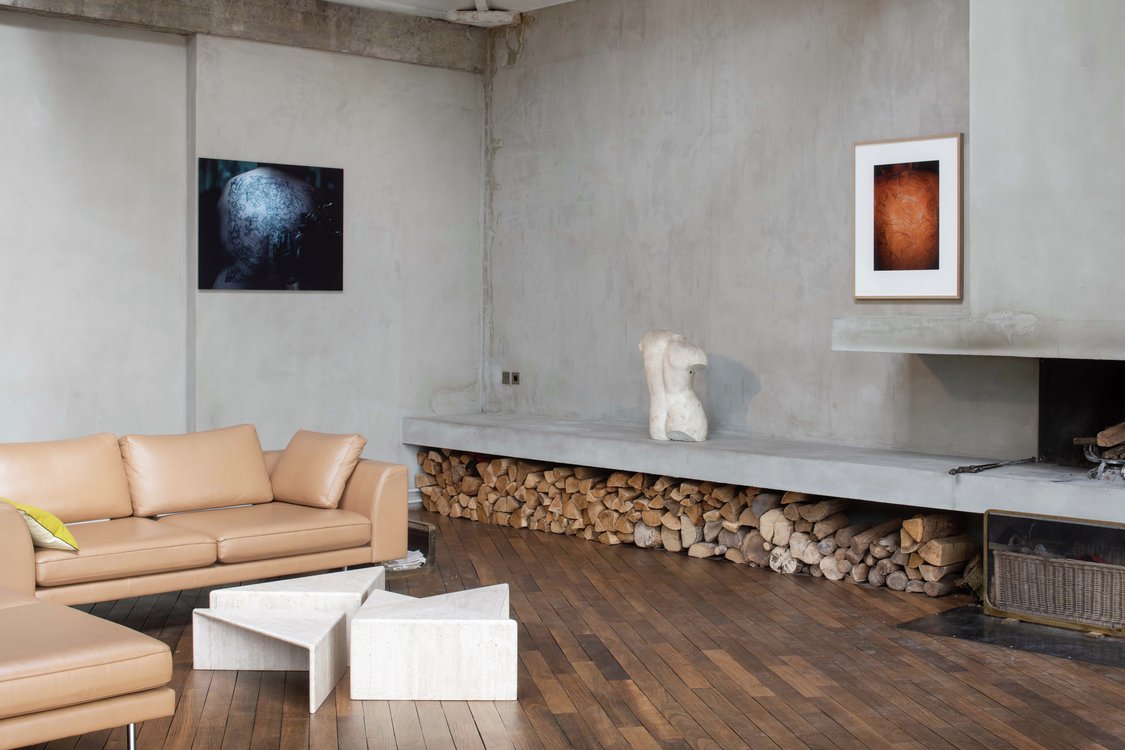Three new series of works are being featured in Gabriel Orozco’s fourth solo show at the Chantal Crousel Gallery.
First comes a set of fired clay vehicles that follows the Cazuelas (beginnings)*, exhibited at Documenta XI this year. This hand-modeled approach represents an extension of earlier works such as Yielding Stone of 1992 (a ball of plasticine weighing as much as Orozco himself, rolled down the street to acquire debris that it picked up along the way) and Pescados of 1993 (left-overs of tiles bearing a trail of the artist’s own fingers). Here again, clay objects are scarred by the history of their making: the vagaries of their existence are inscribed on their surface, the marks of the artist’s hand are permanently retained as they dry. Furthermore, the almost organic shapes of these containers evoke Mis Manos son mi Corazon of 1991, where the pressure of Orozco’s hands transformed a mass of clay into a “solid” described by the artist as “both massive and dynamic.” This terracotta “containers” shown here are “full,” they are “solid” impressions of the action of the artist’s hands on moist clay. Set on a table, they also bear traces of the motion of the wooden sphere used to shape them, plus traces of erosion due to their fragility. Their color, meanwhile, is the product of firing. The indeterminate shapes of these objects are sometimes abstract, sometimes concrete (suggesting fish, arms, pieces of bread), yet they always “contain light” along with the consummate gesture of their very making.
Whereas the terracotta containers bear internal traces of gestures, Orozco’s photographs of Malian landscapes testify to the presence, practices, and relations of the human body. In the Cemetery series, for example, bowls used to carry and store food and water are stranded on sandy tombs, set there as though accompanying the deceased into the open vastness of the desert. A different sense of infinity, meanwhile, is present in the photograph titled Total Perception, showing the mosque of Timbuktu in which light, earthen floor, mats, and rugs together construct a very simple space of concentration and meditation. Each of the sixteen photographs seems to say, “We have passed this way…” Erosion and the geometry of human activity are, together, inscribed on these Malian landscapes. At the crossroads of nature and culture, these paths converge in an image of reality and oneness.
The human figure, although absent from Orozco’s global oeuvre, has here left a stubborn trace of its passage in the clay of the containers, the photographs of landscapes, and the paper of drawings.
*Gabriel Orozco would especially like to thank potter Jean-Marie Foubert for his generous help in producing Cazuelas (beginnings) and the containers included in this exhibition.
